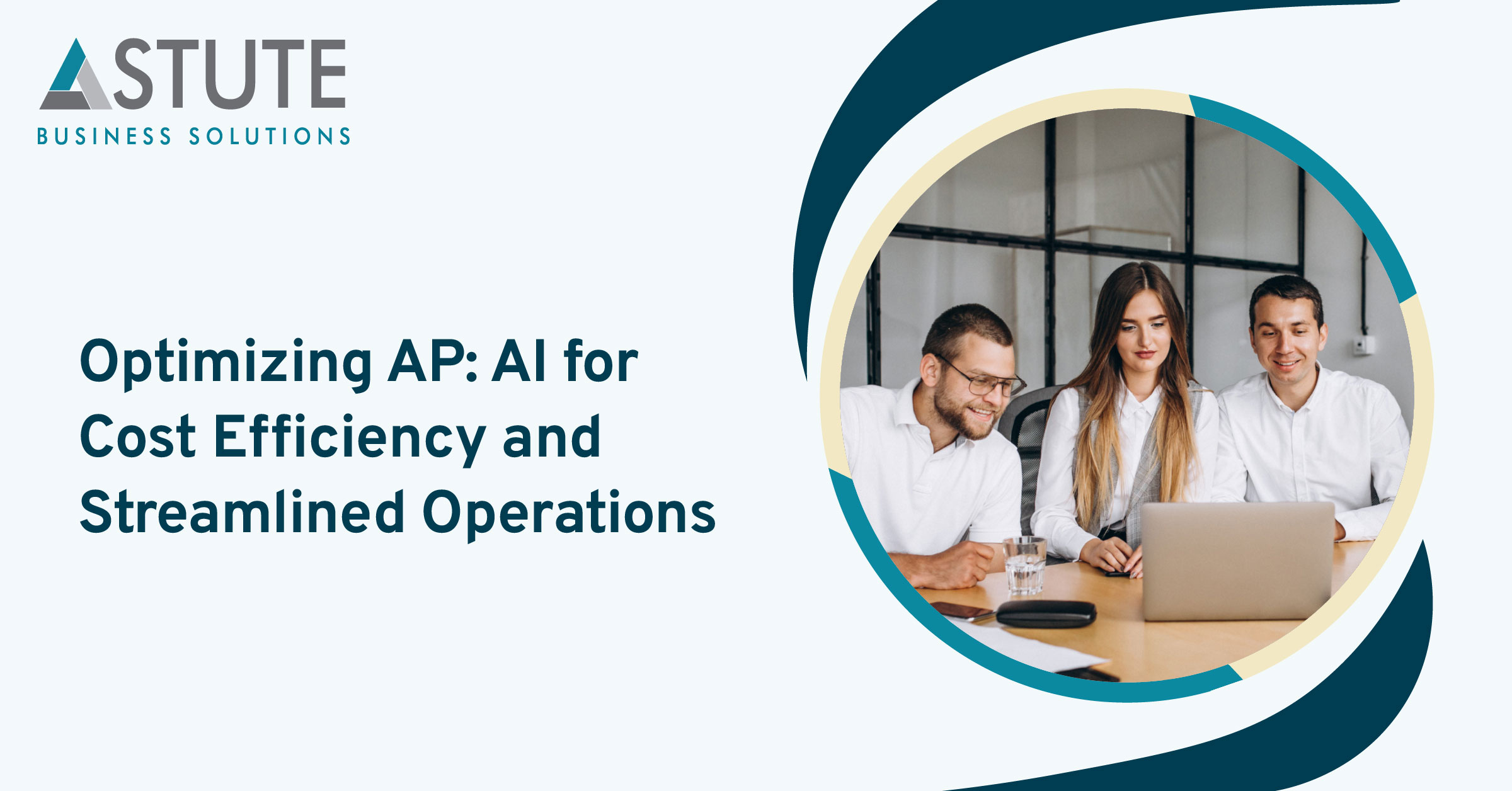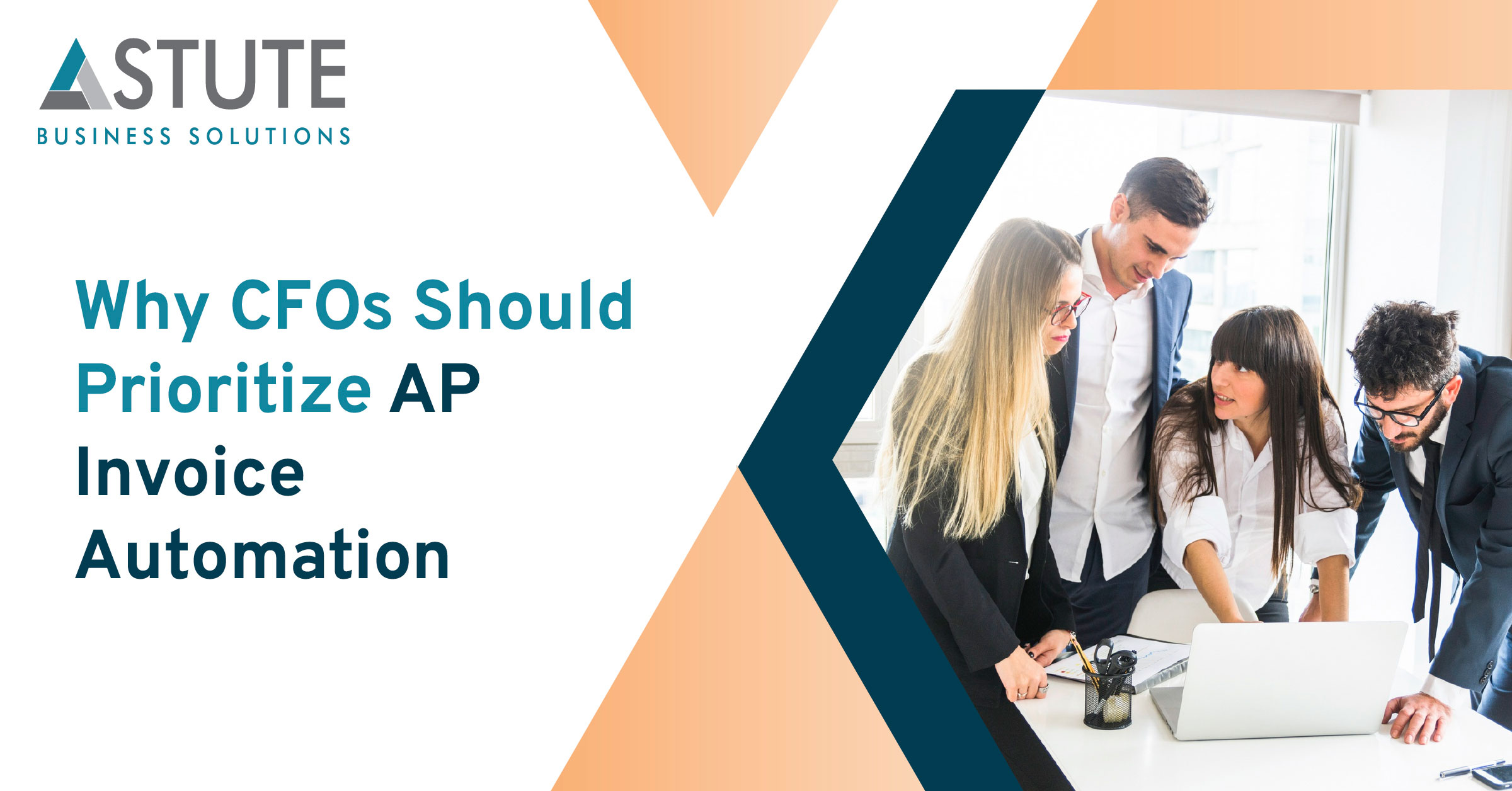Beyond Automation: How AI Enables Proactive Decision-Making in Accounts Payable
.jpg?width=2500&height=1006&name=Feature%20Image%20(1).jpg)
Table of Contents
Automation was a game-changer for AP—turning stacks of paper into digital workflows and slashing the time spent on manual tasks. But automation alone is no longer enough. Today’s finance leaders are looking beyond efficiency gains. They want intelligent systems that can anticipate risks, provide surface insights, and support smarter decision-making in real-time.
This is where Artificial Intelligence (AI) is rewriting the rules of Accounts Payable. More than a tool for automation, AI is evolving into a decision enabler, shifting AP from a reactive cost center to a strategic driver of business value.
Let’s explore how AI is powering this next frontier in AP transformation — proactive, predictive, and performance-led.
1. From Reactive to Proactive: Why AP Needs to Evolve
Traditional AP systems rely heavily on predefined workflows. They follow the rules but lack the ability to adapt, learn, or predict. As a result, teams are often stuck in reactive mode:
- Chasing down missing invoices
- Identifying payment errors after they’ve occurred
- Handling bottlenecks one transaction at a time
- Facing vendor escalations without full visibility
In contrast, AI-powered AP solutions process vast volumes of data to spot patterns, flag anomalies, and recommend actions before issues arise. This shift empowers AP teams to get ahead of problems and align closer to CFO-level goals — from working capital optimization to fraud mitigation.
2. Intelligent Invoice Processing with Predictive Accuracy
At the core of any AP function lies invoice processing. AI now enhances this function in ways rule-based automation never could:
- Data Extraction with ML: AI engines use machine learning (ML) and natural language processing (NLP) to read unstructured invoice data — even from images or emails — with 95%+ accuracy.
- Intelligent Matching: Beyond basic 2- or 3-way matching, AI systems predict which GL code or cost center an invoice belongs to, learning from past entries and reducing human error.
- Confidence Scoring: Instead of just processing an invoice, AI assigns a confidence score to each data point, allowing AP teams to review only where risk is high.
The result? Smarter workflows and better use of human oversight, focused on exceptions, not routine validation.
3. Early Detection of Fraud and Policy Violations
Manual audits often catch fraud or non-compliance only after the payment is made. AI in Accounts Payable changes this timeline dramatically.
- Anomaly Detection Models: AI continuously scans payment trends and vendor behavior to flag suspicious activity — such as duplicate invoices, unexpected vendor changes, or off-policy purchases.
- Behavioral Baselines: Intelligent AP systems build a profile of normal activity across vendors, departments, and categories. Deviations are surfaced as alerts in real-time.
- Proactive Policy Enforcement: AI validates each invoice against company policies and compliance rules — flagging mismatches before approvals happen.
This proactive risk control is essential, especially for organizations processing thousands of payments across geographies and systems.
4. Predictive Cash Flow and Spend Visibility
Proactive AP doesn’t stop at process accuracy. It extends to financial foresight.
- Forecasting Payables Pipeline: AI helps AP teams predict when invoices will be approved and paid based on historic processing times, vendor behavior, and payment terms.
- Dynamic Discounting Insights: By analyzing payment trends, AI recommends optimal payment windows to capture early payment discounts or avoid late fees.
- Spend Pattern Insights: Intelligent systems categorize and visualize spend data — identifying opportunities to renegotiate contracts, consolidate vendors, or shift buying behaviors.
In essence, AI equips AP professionals with real-time financial intelligence to guide payment timing, working capital decisions, and budgeting conversations.
5. Smarter Workflows with Intelligent Prioritization
All AP processes are not equal. Some invoices are more time-sensitive. Some exceptions are more complex. AI introduces intelligent prioritization into AP workflows:
- Risk-Based Routing: High-risk or high-value invoices can be routed to senior reviewers, while low-risk, high-confidence invoices can be fast-tracked.
- Auto-Triage of Exceptions: AI classifies exception types (e.g., missing PO, price mismatch, duplicate) and recommends resolutions based on past outcomes.
- Effort vs. Impact Visibility: AP teams can focus energy on decisions that drive impact — rather than firefighting every flagged invoice.
This shift from one-size-fits-all workflows to contextual prioritization improves both efficiency and decision quality.
6. Empowering AP Teams with Actionable Dashboards
AI doesn’t just automate — it augments human intelligence.
- Real-Time Dashboards: AI-driven platforms surface KPIs like invoice aging, blocked invoices, discount leakage, or exception rate trends — tailored by user role.
- What-If Analysis: Teams can simulate what happens to cash flow if certain invoices are paid early or held.
- Conversational AI: Finance users can query systems using natural language — e.g., “Show me all pending invoices above $50K from last week.”
These insights give AP teams more control, context, and confidence in every decision they make.
7. Accelerated Month-End Close and Reporting
Closing books at month-end often becomes a fire drill. With AI, AP processes are continuously reconciled, categorized, and validated — in near real-time.
- Continuous Reconciliation: AI validates invoice and payment entries against ledgers, flagging discrepancies instantly.
- Automated Accruals: Based on invoice aging and approvals in progress, AI can suggest accrual entries — reducing end-of-month guesswork.
- Narrative Reporting: Generative AI tools can help finance teams automatically draft reports, highlighting AP performance and insights.
By removing last-minute surprises, AI enables a smoother, faster, and more accurate close cycle.
The Bigger Picture: Strategic Value of AI-Enabled AP
Finance transformation is no longer about doing the same tasks faster. It's about shifting the mindset from reactive processing to proactive insight delivery.
With AI embedded in AP, organizations can:
- Anticipate cash needs more accurately
- Reduce fraud and compliance risks proactively
- Make data-backed decisions faster
- Free up talent to focus on analysis, not data entry
In short, AI moves AP from process-centric to performance-centric.
Conclusion: A Smarter Future Starts with Proactive Decisions
Automation is just the starting point. The real breakthrough lies in how AI empowers Accounts Payable teams to make better, faster, and more forward-looking decisions. Whether it’s catching anomalies before payments go out, optimizing payment timing, or enhancing vendor relationships through transparency — AI is redefining how modern AP operates.
As finance teams navigate increasing complexity and pressure, those who embrace intelligent, proactive systems will gain a competitive edge in agility, accuracy, and strategic contribution.
Now is the time to move beyond automation — and discover the full decision-making potential of AI in Accounts Payable.

Sudhir Mehandru
Sudhir Mehandru is Co-founder and CFO of Astute Business Solutions. He is leading the expansion of Astute services to include Cloud Managed Services, Disaster Recovery on Cloud, and Integration and Process Automation using Platform Cloud Services. He has over 25 years of experience in Accounting, Finance, and IT Outsourcing, including ERP implementations, Application Hosting, Cloud migration, and the Implementation of complex Financial, Accounting, Manufacturing, Supply Chain, and CRM systems, both on-premise and in the Cloud. His most recent focus is on accounting and finance automation using AI.
Other Articles
Lorem Ipsum is simply dummy text of the printing and typesetting industry.
Optimizing AP: AI for Cost Efficiency and Streamlined Operations
In the quest for financial excellence, finance departments face the challenge of processing...
Why CFOs Should Prioritize AP Invoice Automation
Chief Financial Officers (CFOs) increasingly leverage technology to streamline operations and...
Why Cloud Migrations Fail and How to Ensure Success
Cloud migration, the process of transferring digital operations into the cloud, is heralded as a...
Subscribe
Our Newsletter
Since every environment is uniquely different we'll customize a solution just for you.
See The Team In Action
Upcoming Events
Reach Out
Ready to Connect?
Please fill the following form, we will get back to you within a business day.
Contact Form
Contact Us


.jpg)